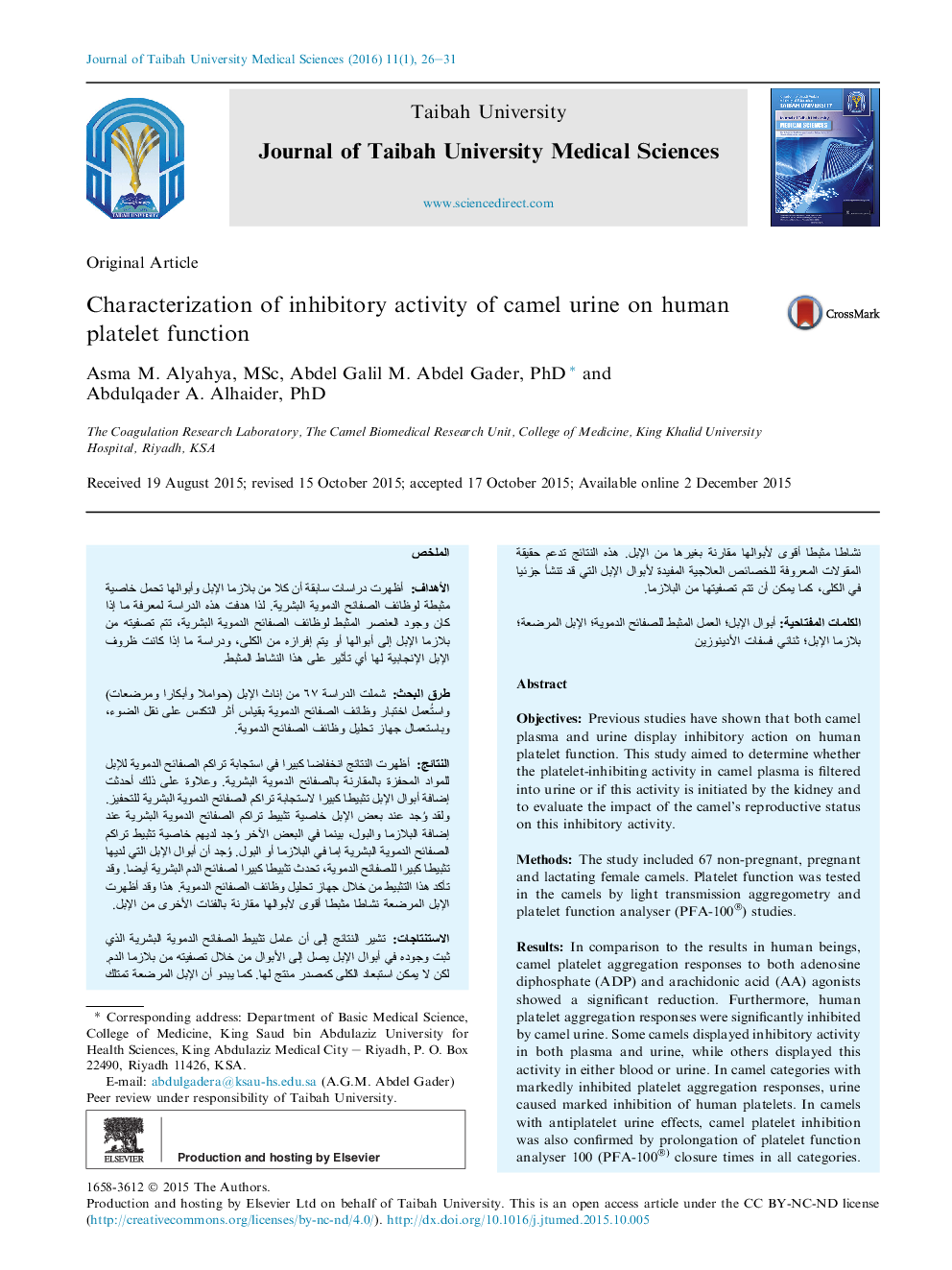| Article ID | Journal | Published Year | Pages | File Type |
|---|---|---|---|---|
| 3484342 | Journal of Taibah University Medical Sciences | 2016 | 6 Pages |
ObjectivesPrevious studies have shown that both camel plasma and urine display inhibitory action on human platelet function. This study aimed to determine whether the platelet-inhibiting activity in camel plasma is filtered into urine or if this activity is initiated by the kidney and to evaluate the impact of the camel's reproductive status on this inhibitory activity.MethodsThe study included 67 non-pregnant, pregnant and lactating female camels. Platelet function was tested in the camels by light transmission aggregometry and platelet function analyser (PFA-100®) studies.ResultsIn comparison to the results in human beings, camel platelet aggregation responses to both adenosine diphosphate (ADP) and arachidonic acid (AA) agonists showed a significant reduction. Furthermore, human platelet aggregation responses were significantly inhibited by camel urine. Some camels displayed inhibitory activity in both plasma and urine, while others displayed this activity in either blood or urine. In camel categories with markedly inhibited platelet aggregation responses, urine caused marked inhibition of human platelets. In camels with antiplatelet urine effects, camel platelet inhibition was also confirmed by prolongation of platelet function analyser 100 (PFA-100®) closure times in all categories. Lactating camels showed stronger urine inhibitory activity compared to other groups.ConclusionsThese findings suggest that an inhibitory factor could be filtered from camel plasma; however, a renal source cannot be excluded. Lactating camels seem to possess more potent urine inhibitory activity compared to other camel groups. These findings support the fact that the claimed beneficial therapeutic properties of camel urine originate in part from the kidney and could be filtered from plasma.
